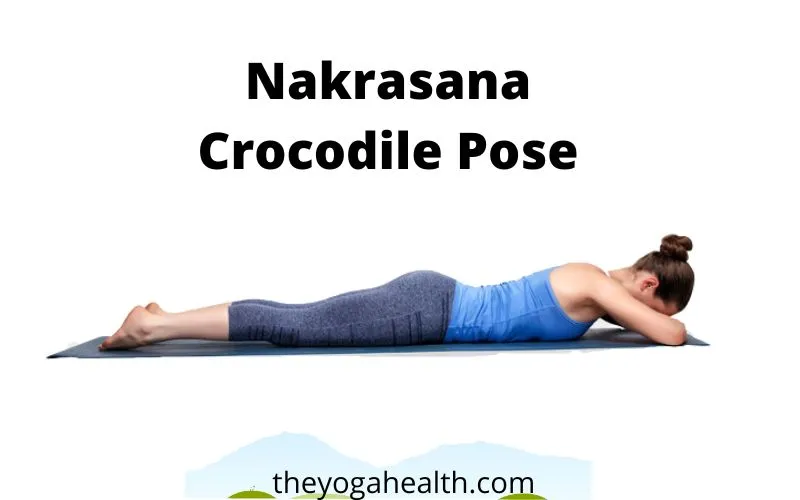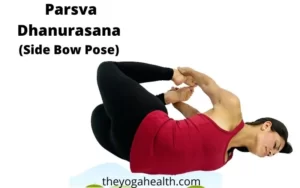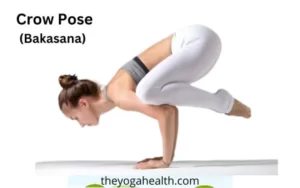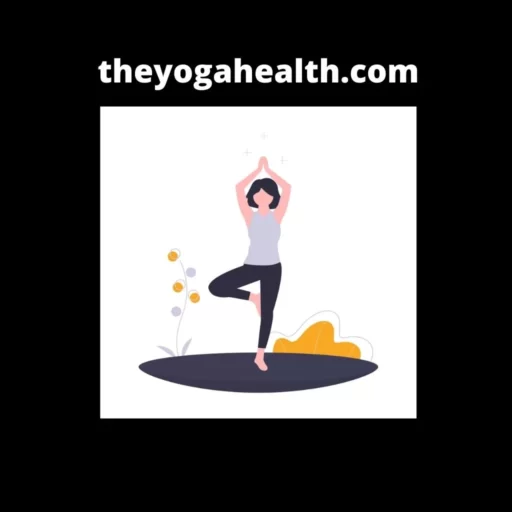Crocodile Pose in yoga (Makrasana) is one such pose that extends from beginner to the advanced. ‘Makra’ or ‘Nakra’ in the Sanskrit language means a ‘Crocodile’, and ‘Makrasana’ means ‘Crocodile pose.’
In this pose the body is compared to a crocodile whose face and neck are up and above the water.
Table of Contents
Crocodile Pose In Yoga (Makrasana)
In Makrasana the practitioner lies down on his belly face down, hands folded at the elbows and placed below the forehead and the legs are spread out as much as possible.
Makarasana is the only relaxation pose and it is not possible for the practitioner to sleep, due to the upright position of the head and the neck.
In this pose heart rate is reduced and the entire muscular system is relaxed. Makrasana is a relaxation pose and it is normally done after the end of the yoga session. This is a base pose for various Makrasana variations that can be derived from it.
Crocodile Pose In Yoga (Makrasana) quick details
| Sanskrit Name | Makarasana, Nakarasana |
| English Name | Crocodile Pose |
| Difficulty Level | Beginner to advanced |
| Position | Prone |
| Type | Relaxation pose |
Crocodile pose Steps (First Variation)
- Lie down on the floor on your belly.
- Keep your hands folded under your forehead.
- Now place your right palm over your left palm and place your forehead over your right palm in a relaxed manner.
- Close your eyes
- Now stretch your legs as far as you can, keeping your toes pointed outwards. Your legs should be about sholder distance apart from each other.
- Relax your body and breath normally and deeply, relax your muscles while keeping your whole body touched to the ground.
- You can hold this pose for about 2 to 5 minutes.
- While returning back, slowly bring your feet together and unfold your arms and come back to normal position.

Crocodile Pose Steps (Second Variation)
- Lie down on your belly.
- By creating a 45-degree angle with your thigh and calf bend your right leg.
- Your left leg should be stretched straight behind you.
- Put your left cheek on the floor and look to your right.
- Place your hands under your left cheek to create support.
- You can rest in this pose for 1 to 5 minutes while breathing deeply.
- You can repeat the same with the other leg.
Crocodile Pose Benefits
1. Helpful in curing lung disorders
Deep breathing is involved in this pose which helps in improving lung capacity and efficiency. People suffering from disorders like chronic obstructive pulmonary diseases (COPD) and asthma are benefitted from the daily practice of this pose.
2. Improves digestion
This pose is practiced with deep breathing in a prone position. It tones and massages the abdominal organs and improves their functioning. Improving the digestive system of the body this pose helps in curing constipation.
3. Blood circulation
In Makarasana the prana energy flows properly through the base of the spine, fresh blood comes towards the entire spine and is circulated throughout the body, thus keeping the spine free from all harmful ailments.
4. Lower back stiffness
The slow rhythmic breathing in this prone pose reduces the tensions around the muscles of the lower back, closer to the sacrum, thereby reducing the spasm.
5. Sacrum stimulation
In Makasrasna, the muscles around the sacrum are contracted, which is the biggest benefit of doing this pose. The sacrum is a triangular bone that is at the base of the spine between the two hip bones.
Stimulation of the sacrum helps in improving the flow of prana energy through the entire spine, which flexes the hips and removes blockages.
6. Rejuvenates the body
This pose helps to relax the spine and shoulders and relieves the entire body. It relieves fatigue by relaxing and releasing tight knots in the body and rejuvenating the body of the practitioner.
7. Stress and anxiety reliever
Makrasana has soothing effects on the brain. It helps in preventing mental disorders, anxiety, and stress by activating the parasympathetic nervous system in the body. It turns your mind inward, calming it and preventing anxiety.
8. Reduce blood pressure
The blood pressure comes under control by regular practice of this asana because the smooth flow of breath and activation of diaphragm muscle reduces the functioning of the respiratory and circulatory system.
Contraindication
- Pregnant women should avoid this pose as great pressure comes on the stomach in this pose which may cause harm.
- In case of any suffering, ailment, operation, or surgery related to the stomach area, this pose should be avoided.
- High Blood pressure. If you are suffering from high blood pressure then you should avoid this yoga pose because breathing is a very important part of this pose, and if breathing is not done properly then uneven breathing can out pressure in the arteries.
- If case you have a serious back injury then avoid this asana.
Modification and variation
There are several variations of Crocodile Pose that you can do as per your comfort. You can straighten both legs behind you, fold your elbows and create a support for your forehead.
Fold your hands and keep the tips of your elbows on the yoga mat with your fingers facing upwards. Your elbows should be shoulder-distance apart.
Now raise your head and shoulder, keeping your neck straight look in front of you. You can stay in this pose for a few minutes for complete relaxation.
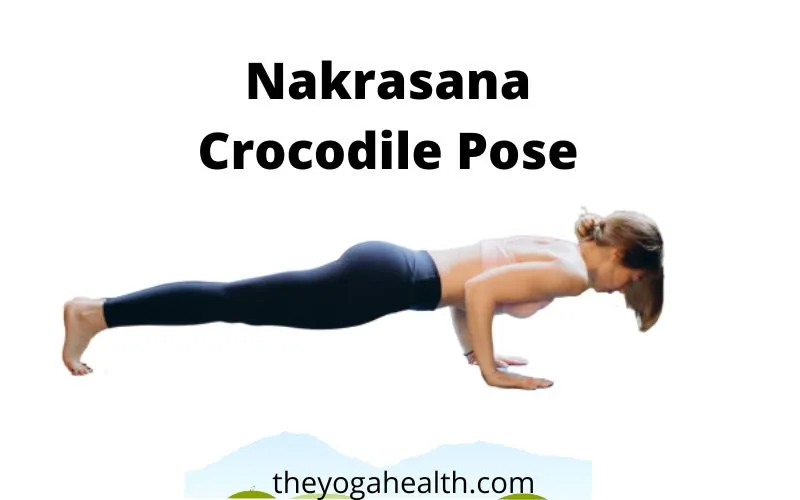
Crocodile pose In Yoga (Advanced Variation)
This pose contains several dynamic movements resembling those of a crocodile ready to stalk its prey, hence this name.
Steps:
- Face downwards, lie flat on the floor.
- Bend your elbows and place your palms by the side of your waist.
- Keep your feet about one foot apart from each other, breathe out and raise your body a few inches above the ground. Balance your body on your palms and the toes.
- Keep your knees tight and your body stiff as a poker your body should be parallel to the ground.
- Now take a few breaths and with an exhalation swing your whole body a foot forward lifting your hands and feet simultaneously off the floor.
- Take a few breaths after going a foot forward then breathe out and swing forward again.
- You can repeat the forward swings four or five times. At the end of each swing, the position of the body should be as described in the above picture.
- These movements resemble the swings of a crocodile stalking its prey.
- Take a few seconds to rest with a deep breath after each swing.
- Now reverse your movements and with every breath out jump back about a foot with every jump until you return back to the position from where you started.
Benefits
- This pose develops powerful wrists.
- The lethargy of the body is removed.
- Fatigue of the brain is relieved.
- The entire body is rejuvenated and also makes one feel vigorous and lively.
Precautions
As great pressure comes on the wrist, so they are tried gradually, otherwise, writs can be sprained.
Conclusion for Crocodile Pose in Yoga:
If you want to rejuvenate your body and want to feel refreshed throughout the day then start practicing Crocodile pose in Yoga (Makrasana). This pose offers many health benefits so it should be included in your daily yoga routine.
FAQs: Crocodile Pose In Yoga
Q1. What is Crocodile Pose?
Ans. Crocodile Pose, also known as Makarasana, is a yoga asana that mimics the resting position of a crocodile.
In this position, the practitioner lies on their stomach, enabling their body to unwind and revitalize while they concentrate on their breathing and let go of tension.
Q2. How do I get into Crocodile Pose?
Ans. To get into Crocodile Pose, follow these steps:
Lay down on your stomach, extend your legs keeping your feet hip-width apart.
Put your palms on the ground, keep them shoulder-width apart and then rest your forehead on your hands
Relax your entire body and find a comfortable position.
Q3. What are the benefits of Crocodile Pose?
Ans. Crocodile Pose offers various benefits, including:
Relaxation: This pose promotes deep relaxation and calms the mind by relieving stress and anxiety.
Spinal Alignment: It helps in aligning the spine, which can be beneficial for individuals with back pain.
Breath Awareness: By focusing on the breath, Crocodile Pose improves respiratory function and lung capacity.
Digestive Aid: The gentle pressure on the abdomen aids in digestion and can relieve digestive discomfort.
Shoulder and Neck Relief: It releases tension in the shoulders and neck, which is especially useful for people with desk jobs or sedentary lifestyles.
Q4. Is Crocodile Pose suitable for beginners?
Ans. Yes, people of all ages and fitness levels can engage in Crocodile Pose, and it is beginner-friendly pose.
It does not involve complex movements and allows practitioners to ease into the practice gradually.
Q5. When is the best time to practice Crocodile Pose?
Ans. Crocodile Pose can be practiced at any time of the day.
However, it is especially beneficial when performed as part of a morning or evening yoga routine to set a positive tone for the day or promote relaxation before bedtime.
Q6. How long should I stay in Crocodile Pose?
Ans. The duration of time spent in Crocodile Pose can vary based on individual preferences and comfort levels.
It is recommended to stay in the pose for at least 5 to 10 minutes to experience its full relaxation benefits.
Q7. Can Crocodile Pose help with stress and anxiety?
Ans. Yes, Crocodile Pose is excellent for managing stress and anxiety. It creates a sense of calm and tranquillity by intentionally focusing on deep, rhythmic breathing and letting go of bodily tension.
Q8. Are there any precautions to consider while practicing Crocodile Pose?
Ans. While Crocodile Pose is generally safe, individuals with the following conditions should exercise caution or avoid the pose:
Pregnancy: Pregnant women should avoid lying on their bellies for an extended period.
Serious Back or Neck Injuries: People with severe back or neck issues should consult a yoga instructor or healthcare professional before attempting this pose.
9. Can Crocodile Pose improve posture?
Ans. Yes, Crocodile Pose helps in improving posture by aligning the spine and strengthening the muscles along the back.
With regular practice, it can contribute to better posture both on and off the yoga mat.
10. Can I use Crocodile Pose to relieve lower back pain?
Ans. Crocodile Pose can be beneficial for relieving lower back pain when performed mindfully.
It allows the back muscles to relax and can be particularly helpful after engaging in activities that strain the lower back.
Share your experience of doing Crocodile Pose and if you have any questions or comments regarding this Post you can ask in the comments section below.

